#Fantasy | Fact
Text
Forget 'Walking The Plank.' Pirate Portrayals—From Blackbeard to Captain Kidd—Are More Fantasy Than Fact.
How we think famous swashbucklers walked, talked, and dressed didn't come from the history books, so where did these pirate myths come from?
— By Jamie L. H. Goodall
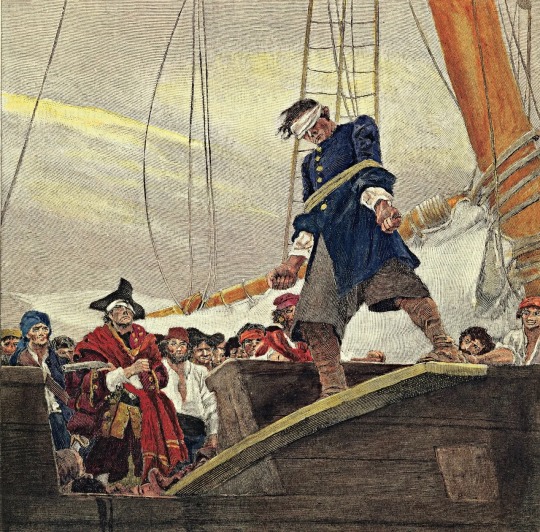
An illustration from 19th-century artist Howard Pyle depicts a man being forced to walk the plank. Although there is no record of this type of punishment, it remains popular in pirate mythology. Photograph By Image Courtesy of Bridgeman Images
Say “pirate,” and people envision grizzled men with eye patches, parrots, and treasure maps. They picture buccaneers forcing their victims to walk the plank, and crying “Shiver me timbers” as they fly the Jolly Roger flag. It turns out, many of these stereotypes are not true. Pirates have been around for nearly as long as people have sailed the world’s waters, and, in fact, still exist. It’s just how they’ve been depicted that’s often misleading. So where did these misinterpretations come from?

A replica pirate ship cruising the Caribbean Sea near the Dominican Republic. Photograph By Thomas Grau, Alamy Stock Photo
Pirate Fashion
Pirates are commonly portrayed wearing colourful attire. He may sport as a loose-fitting shirt with a bandana around his head, a scarf around his waist, ripped pants, wearing tattered boots, like Captain Jack Sparrow from the Pirates of the Caribbean film series. Or he may appear a bit foppish, much like Stede Bonnet, the "gentleman pirate" in the 2022 series Our Flag Means Death.
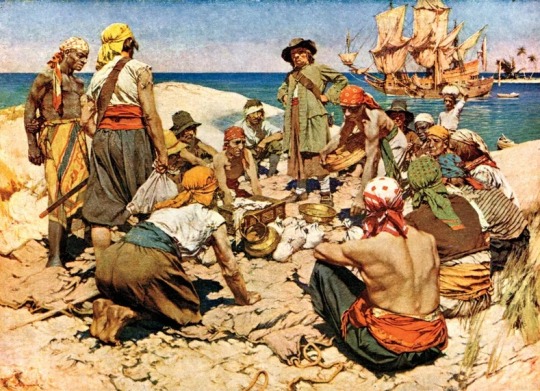
Common pop culture depictions of pirate garb, as shown here in this early 20th century artwork, are often based on fanciful descriptions of their attire and language. Photograph By Image Courtesy of Bridgeman Images
Unfortunately, these looks are just not true. Much of this ostentation came from American artist Howard Pyle, who took his inspiration from Spanish bandits of the late 19th century. Sailors in the 18th century, pirates included, wore things such as loose pants cut off at the knee and thigh-length blouses.
Prosthetic limbs are another common pirate trait. It’s true some pirates had a wooden leg or hook hand, though it probably wasn’t the norm. More often than not, amputations at sea were likely a death sentence. While ships carried medicine chests, and medical care was often meted out by someone on the crew, infection and blood loss could lead to death. Even if a pirate survived an amputation, his ability to fight would be limited. But losing a limb didn’t mean one could not continue on the ship; the person might serve the crew, for instance, as a cook.
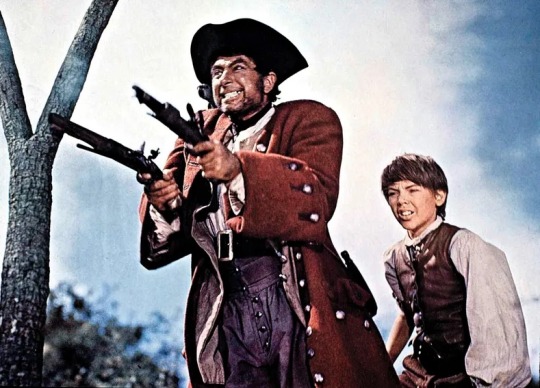
Many pirate clichés stem from the 1950 film 'Treasure Island,' featuring Robert Newton as the fictional pirate Long John Silver. Photograph By United Archives GMBH, Alamy Stock Photo
Pirate Talk
Common pirate phrases—such as Arrrrr me mateys!” and “Shiver me timbers!”—are common in pirate movies and pop culture. But they’re not legitimate things a pirate would actually have said. Robert Louis Stevenson imagined some of them for his 1883 novel Treasure Island, published more than 150 years after the “golden age” of piracy.
The trope of talking like a pirate is mostly a product of 20th-century Hollywood. In particular, British actor Robert Newton, who played both Blackbeard and Long John Silver. His portrayal of the fictional captain in the 1950s rendition of Treasure Island used an exaggeration of his own West Country accent and would define the sound of a pirate's accent. His portrayal also popularised many of the sayings associated with pirates today. In reality, pirates most probably spoke in a manner similar to all sailors of the time.
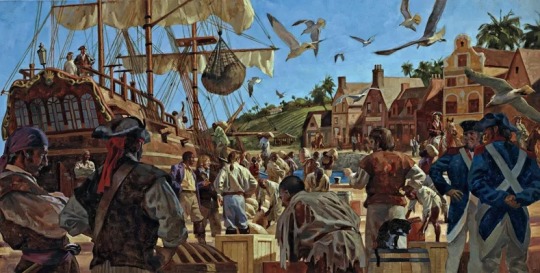
An artist imagines the often-willing markets pirates found throughout the Atlantic world for their stolen loot. Transatlantic trade was critical for the success of European colonies. Photograph By Gregory Manchess
Treasure, Buried or Otherwise
Captain Kidd may have buried his treasure, but that was a rare exception for most pirates. Typically, they spent their ill-gotten gains on women and alcohol at pirate-friendly ports as quickly as they could. Burying treasure would be dangerous due to shifting sands and tides, so one might easily lose their treasure. And there was a distinct lack of trust, not knowing if others might deceptively go back to dig up the treasure on their own.
Also, much of the loot pirates collected was not in the form of silver or gold. Such treasure would have been difficult to come by. The more common "booty" would have been whatever goods or commodities they could get their hands on, including timber, furs, silks, cotton, spices, and medical supplies. They also loaded up on items to perform necessary repairs on their ships, including cable, rigging, and sails.

Top Left: A gold bar and coins recovered from the Spanish galleon 'Las Maravillas' that wrecked in 1656 near the Bahamas. Photograph By Jeff Rotman, Nature Picture Library, Alamy Stock Photo Top Right: Prized Spanish coins, or pieces of eight, recovered from the wreck of the 'Whydah Gally'. Photograph By Zuma Press Inc., Alamy Stock Photo Bottom: Wooden treasure chests were typically studded with metal to reinforce them. Photograph By Andyroland, IStock, Getty Images
Pirate Codes
There is evidence that many pirate crews adopted a code of honour or articles of agreement, mostly to keep order on board the ship. These codes dealt with everything from how to divvy up loot, to what happened to pirates if they became injured in the line of duty, to how bad behaviour would be dealt with, to how prisoners would be treated. Some pirate articles have survived to this day, including the code of Englishman George Lowther and his crew, which, for example, compensated a person who lost a limb during a skirmish.

The 1724 articles of Captain John Phillips of the 'Revenge' discuss matters such as theft on board the ship and compensation for limbs lost during battle. Photograph By British Library Board. All Rights Reserved, Bridgeman Images
If a pirate violated the code, it is unlikely they were made to "walk the plank." Little to no historical evidence exists to support that practice, which was largely pulled from fiction, including Treasure Island. If victims were punished in some way, it was typically via keelhauling. Keelhauling was arguably a more hideous fate that involved an individual being tied to a rope and dragged under the ship. Victims of keelhauling either died by bleeding out from injuries inflicted by barnacles on the hull of the ship or by drowning. Other forms of punishment ranged from being thrown overboard to being lashed to being marooned on a desert isle.
Pirate Ships 🛳️ 🚢
Most pirates did not sail Spanish galleons, or even the frigates such as Captain Jack Sparrow’s Black Pearl. They favoured small, more manoeuvrable vessels, which allowed easy escape from larger warships that chased them. During the 16th and 17th centuries, sloops were the most common choice for pirates. They were quick and had a shallow draft, making easier escape into shallow waters. Schooners were another favourite of pirates. Similar to sloops, schooners were fast, simple to manoeuvre, and could easily hide in estuaries because of their shallow draft.

Top: A replica of the 17th-century Spanish galleon 'Neptune'. Photograph By Volodymyr Dvornyk, Shutterstock Middle: A crew raises the anchor from what is believed to be the remains of the pirate Blackbeard’s flagship, 'Queen Anne’s Revenge.' It was discovered in Beaufort Inlet, in Carteret County, North Carolina. Photograph By AP Photo, Robert Willett, The News & Observer
Bottom Left: The National Museum of the Royal Navy in Hampshire, England, displays a Jolly Roger that once belonged to Admiral Richard Curry, who seized it from pirates off the North African coast in 1790. Photograph By Andrew Matthews, Getty Images Bottom Right: Coves, such as this one near Bridgetown, Barbados, would have made perfect hideouts for pirates. Photograph By Fabio Mauri, Eyeem, Getty Images
And, despite popular myth, most pirates did not fly the famous Jolly Roger—a skull and crossbones symbol on a black flag. Some flew a black flag, which meant the pirate was willing to give quarter, while a red flag meant blood and certain death. Blackbeard’s flag showed a skeleton holding a spear pointing at a bleeding heart. Pirate crews also often held the flags of several different nations so they could raise a particular flag to signal being “friendly” to a passing ship, only to raise their pirate flag once they were in close enough range to attack said vessel.
Pirate Fights
One thing that most of the pop culture depictions of pirates got somewhat right is that they liked versatile weapons. Cutlasses, short swords with a slightly curved blade, could be used to effectively fight in the confined areas of a ship and could also be used to butcher meat.

Top: Bar shot were common tools for pirates, who used them at close range to destroy the rigging and sails of enemy ships. Due to the weights on either end of the bars, they would spin uncontrollably after being fired from a cannon. Bottom: This musket’s barrel and stock were cut down, likely so a pirate could more easily use it in close combat. Photographs By Kenneth Garrett
Pirates also enjoyed using a gun known as a blunderbuss. It had a distinct flared muzzle that sprayed small lead balls at intended victims. Cannons were also common onboard pirate ships. They could be loaded with chain shot (two cannonballs chained together), grapeshot (small cannonballs), or basic cannonballs. Their targets often didn’t stand a chance.
While books, movies, and popular culture may have taken liberty with descriptions of pirates through the ages, these pillagers have terrorised the seas for more than 2,000 years in one form or another, plundering victims and striking fear into their hearts. The most recent pirates work off the coasts of Somalia and Malaysia, looking far different from the “golden age” of piracy depictions. But one thing remains true: They are just as intimidating.

The 18th-century painting 'Anne Bonny, Female Pirate' by Fortunino Matania depicts Anne Bonny and an accomplice taking two sailors prisoner. Photograph By Image Courtesy of Historia, Shutterstock
#Culture | History#Pirate Portrayals#Blackbeard | Captain Kidd#Fantasy | Fact#Pirate Mythology#Pirate Ship 🛳️ 🚢#Pirate Garb#Fanciful | Descriptions#Attire Language#Treasure Island#Transatlantic Trade#European Colonies#Bahamas 🇧🇸
9 notes
·
View notes
Text
Is Pole Dance the same as Stripping?
I get a lot of comments saying something like “bro is a striper” (usually when a post breaks containment), so thought I might as well address the topic!
Please consider supporting me on Patreon if you like my videos!
33K notes
·
View notes
Text







❤❤❤ (tweet ❤)
#good omens#terry pratchett#neil gaiman#photos#terry and neil#btb#16th world fantasy convention#hyatt regency hotel#fun fact
20K notes
·
View notes
Text
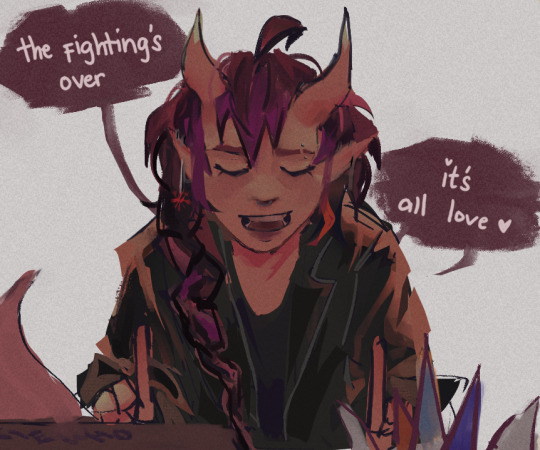

its all love baby
#fantasy high#fantasy high junior year#dimension 20#gorgug thistlespring#fig faeth#fhjy#d20#my art#gorgug hauling his ass to do 4 yrs of coursework only for aa to say “yeah u didnt have to in fact u shouldntve” is CRAZY#fig mvp honestly#AUUAGHH THEY WERE ALL SO COOL i really fw combat eps
5K notes
·
View notes
Text
Thank you baulders gate 3 for letting us make the men just as slutty

#baulders gate 3#gale of waterdeep#like im just enjoying the fact the insane women outfits in fantasy games is also applied to men if they equip the same armor
16K notes
·
View notes
Text
Guys, its not some fucking “bad luck devil” or whatever. It’s clearly this fucking time gargler or whatever the fuck that’s behind all this nonsense. Aguefort literally lays it out for us that the quangle makes things happen out of order. Things like, say…Zelda and Gorgug being broken up even though we know from the Seven that they’re still together in Junior year, or Aelwyn suddenly moving out and going from a snarky 19 year old whose never had a job or gone to college to a middle school teacher with 5 cats in the course of 3 months, or the sophomore album being 10 months late even though Fig only finished her debut a little over 16 months ago AND they were in the middle of the tour, or Hallariel and Gilear getting engaged after like a year when 3 months ago Gilear wasn’t even allowed to sleep in her bed, and Sklonda defending one of the organizers of this folk festival when the festival hasn’t even happened yet, or Figs birthday suddenly moving from Christmas to July.
#honestly the fact that we started en media res could even be construed as part of it#that feeling we had of being thrown into something all out of order#like. i think the fact that the team are such good improvisors is being used to hide whats happening from them#they’re so used to yes anding everything that the inconsistencies don’t pop out#anybody interested is welcome to come and join the church of quanglicanism#quanglicanism#time quangle#dimension 20#d20#fantasy high#fantasy high junior year#fhjy#fhjy spoilers#fhjy theory
5K notes
·
View notes
Text
You know how Flamingos are pink because of the shrimp they eat. That's also why Fig's skin is pink. It's not her fiendish heritage. It's her sheer shrimp intake. Yeah, she's a fiend. A fiend for shrimp.
#dimension 20#d20#fantasy high#fig faeth#figueroth faeth#that flamingo fact is only sorta true btw#they're actually pink because of the algae they eat#the same algae the shrimp eat#so yes they eat shrimp but if you really trace the root of their hue it's the algae#they metabolize the carotenoid pigment in the algae and brine shrimp#and that turns their feathers pink
2K notes
·
View notes
Text
two clerics are dead. another one is murdered in front of you. despite being one of the greatest clerics of your age there is nothing you can do.
clerics are dying around her and there is nothing kristen can do
#i’m so deeply insane about this#the fact that she didn’t want to leave the body#that brennan had to get ally to move forward with the battle#i just#d20#fhjy#fantasy high#dimension 20#kristen applebees
2K notes
·
View notes
Text
Feeling real ridiculous for not having realized that Baron's "stark father" was the Nightmare King until now
#dimension 20#fantasy high#fhjy spoilers#also#love cassandra's gender situation going on here tbh#hell of an episode. i am totally normal about it (they are in fact. not normal about it at all.)#am willing to explain my thought process here if need be#there is a slight temptation to write something about the possible relation between cassandra and baron now though#did cassandra know that was where baron was like she could always summon kalina?#the creator and creation (the thing you made at your worst)#father and son (you can barely sustain yourself. let alone others)#you were once a god and then you weren't and you made this being and now you are a god again and it still exists#hmmmm#hm!#things to think. thoughts to ponder.#sorry i keep adding tags. i keep having Thoughts
1K notes
·
View notes
Text
one of my favourite things about the bad kids is absolutely none of them are part of conventional families. you've got:
- fig "four parents" faeth, with her mom and bio dad and step dad and step dad
- fabian, whose dad is dead, living with an emotionally absent alcoholic mother with her boyfriend in the garage while most of his parental connection comes from his maid
- adaine being disowned and moving in with her guidance counsellor turned adoptive father and her older sister, who's kind of an asshole but they're working on it
- transracial adoptee gorgug who loves both sets of parents very much, thank you (and doesn't need his parents dickhead relatives in his life)
- riz and his overworked but genuinely lovely single mother
- and, of course, kristen applebees, who lives with two of her best friends and her ex-girlfriend's uncle
#not to mention ragh and tracker and ayda and#this is ignoring the fact everyone but gorgug can be construed as each others step-siblings btw#rhi rambles#fantasy high#the bad kids#fabian seacaster#figeroth faeth#fig faeth#riz gukgak#kristen applebees#adaine abernant#adaine o'shaughnessey#d20 fantasy high#d20#dimension 20#dimension 20 fantasy high
2K notes
·
View notes
Text
it wasn't that long ago that i was in a high school math class and yet my eyes have never glazed over faster. i was good at math. i enjoy math. you want the fucking train question? in two minutes? omg i didn't know you were so funny haha
#i dont think i EVER properly understood how to do the train problem#like i mightve done it for one lesson and then never saw it again and happily forgot#the fact that lou ally and murph even tried is astounding#and emily zac and siobhan immediately thinking about the pass stamp is so fair lmao#if i cant do it now i sure as hell cant imagine doing it over a decade out of hs#godspeed intrepid heroes#dimension 20#d20#fantasy high junior year#fhjy spoilers#fhjy
1K notes
·
View notes
Text


Night shift 🌙
#dimension 20#fantasy high junior year#fantasy high#kristen applebees#tracker o'shaughnessey#princess naradriel#fantasy high fanart#trackerbees#fhjy spoilers#fhjy#The fact that Naradriel is just like Kristen but with money is still killing meee!!!!#aaaaaa
762 notes
·
View notes
Text
This also goes for those “revolutionary bow designs” that are only ever shown piercing an empty drinks can from 3 feet away!
Have fun, enjoy this stuff, but be realistic about it! (Especially when the trick shooter in question is actively telling you something isn’t very effective!)
That said, warbow pole archery is clearly a historically useful technique! 😉
As always, please support these videos if you can!
3K notes
·
View notes
Text
Terry Pratchett about fantasy ❤
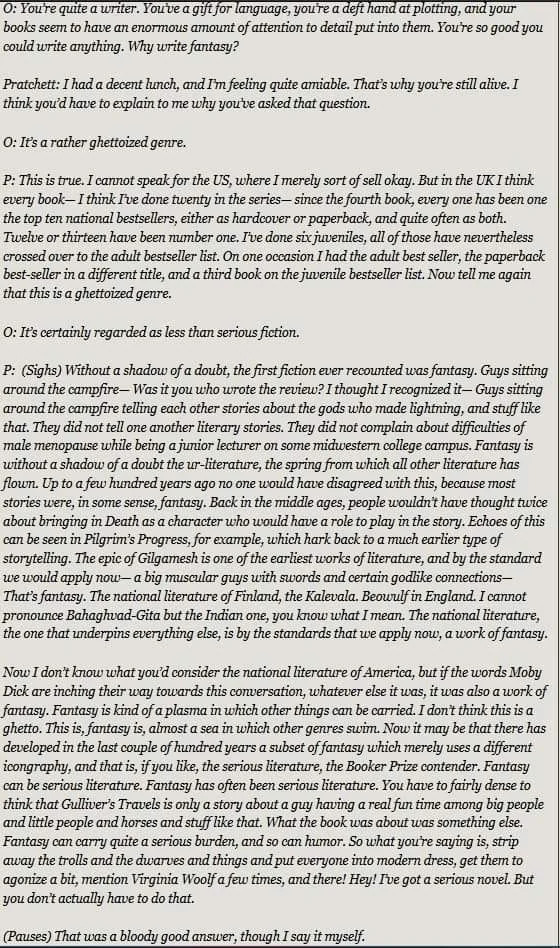
Terry Pratchett interview in The Onion, 1995 (x)
O: You’re quite a writer. You’ve a gift for language, you’re a deft hand at plotting, and your books seem to have an enormous amount of attention to detail put into them. You’re so good you could write anything. Why write fantasy?
Terry: I had a decent lunch, and I’m feeling quite amiable. That’s why you’re still alive. I think you’d have to explain to me why you’ve asked that question.
O: It’s a rather ghettoized genre.
Terry: This is true. I cannot speak for the US, where I merely sort of sell okay. But in the UK I think every book— I think I’ve done twenty in the series— since the fourth book, every one has been one the top ten national bestsellers, either as hardcover or paperback, and quite often as both. Twelve or thirteen have been number one. I’ve done six juveniles, all of those have nevertheless crossed over to the adult bestseller list. On one occasion I had the adult best seller, the paperback best-seller in a different title, and a third book on the juvenile bestseller list. Now tell me again that this is a ghettoized genre.
O: It’s certainly regarded as less than serious fiction.
Terry: (Sighs) Without a shadow of a doubt, the first fiction ever recounted was fantasy. Guys sitting around the campfire— Was it you who wrote the review? I thought I recognized it— Guys sitting around the campfire telling each other stories about the gods who made lightning, and stuff like that. They did not tell one another literary stories. They did not complain about difficulties of male menopause while being a junior lecturer on some midwestern college campus.
Fantasy is without a shadow of a doubt the ur-literature, the spring from which all other literature has flown. Up to a few hundred years ago no one would have disagreed with this, because most stories were, in some sense, fantasy. Back in the middle ages, people wouldn’t have thought twice about bringing in Death as a character who would have a role to play in the story. Echoes of this can be seen in Pilgrim’s Progress, for example, which hark back to a much earlier type of storytelling. The epic of Gilgamesh is one of the earliest works of literature, and by the standard we would apply now— a big muscular guys with swords and certain godlike connections— That’s fantasy. The national literature of Finland, the Kalevala. Beowulf in England. I cannot pronounce Bahaghvad-Gita but the Indian one, you know what I mean. The national literature, the one that underpins everything else, is by the standards that we apply now, a work of fantasy.
Now I don’t know what you’d consider the national literature of America, but if the words Moby Dick are inching their way towards this conversation, whatever else it was, it was also a work of fantasy. Fantasy is kind of a plasma in which other things can be carried. I don’t think this is a ghetto. This is, fantasy is, almost a sea in which other genres swim. Now it may be that there has developed in the last couple of hundred years a subset of fantasy which merely uses a different icongraphy, and that is, if you like, the serious literature, the Booker Prize contender. Fantasy can be serious literature. Fantasy has often been serious literature. You have to fairly dense to think that Gulliver’s Travels is only a story about a guy having a real fun time among big people and little people and horses and stuff like that. What the book was about was something else. Fantasy can carry quite a serious burden, and so can humor. So what you’re saying is, strip away the trolls and the dwarves and things and put everyone into modern dress, get them to agonize a bit, mention Virginia Woolf a few times, and there! Hey! I’ve got a serious novel. But you don’t actually have to do that.
(Pauses) That was a bloody good answer, though I say it myself.
6K notes
·
View notes
Text
Riz Gukgak will forever be my special little guy, because in a world where aspec characters are borderline non-existent, he was not just a cool character who happened to be aroace. He also had an incredibly compelling character arc unique to him as an aspec, and the character arc was so iconic it birthed one of the most memed moments in the entire series.
#tbc im not saying every aspec character's arc should be focused on their aspec identity#in fact it would get very annoying very fast#however aspec experience is so rarely addressed in anything ever#watching riz was so incredibly validating to me#in a way nothing else had ever been#at that time#dimension 20#fantasy high#riz gukgak#bitch speaks
888 notes
·
View notes
Video
I believe in you, keep going.
(Stills under the cut)



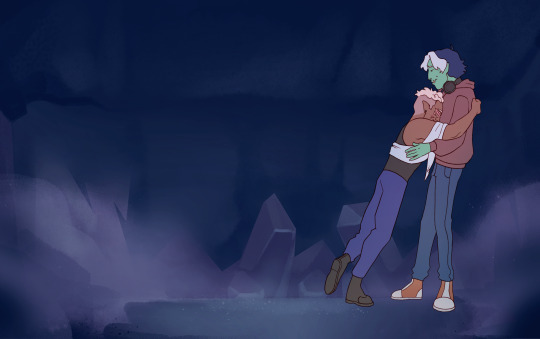
#this parallel lives in my brain every day#the fact that it actually got pointed out mid-scene solidified it for me i think#THEYRE JUST SO#they are friends. and i love them#fhsy did a lot for me emotionally#dimension 20#flash warning#cw flashing#gorgug thistlespring#fabian seacaster#fantasy high#fantasy high sophomore year#my art :)
5K notes
·
View notes